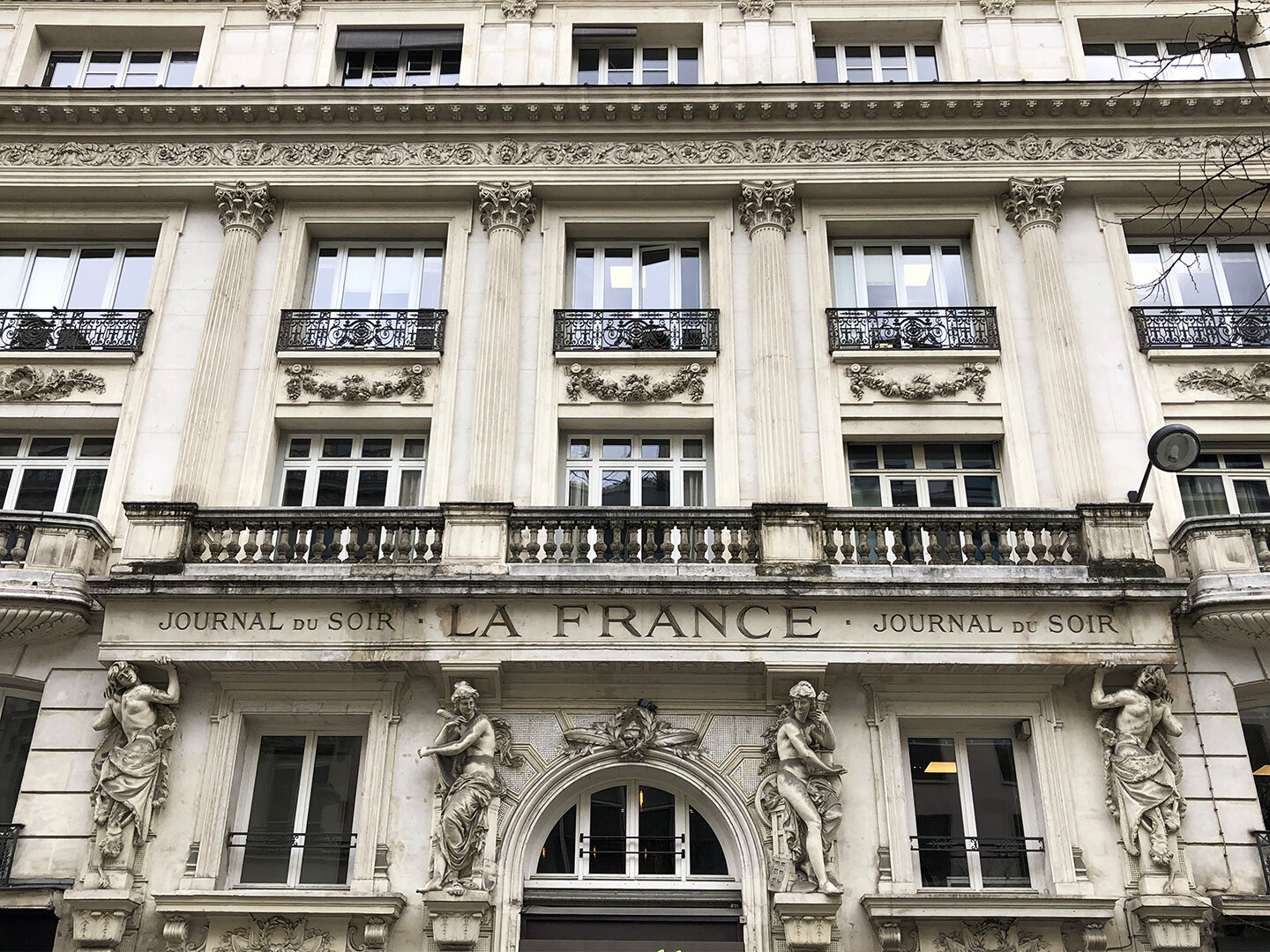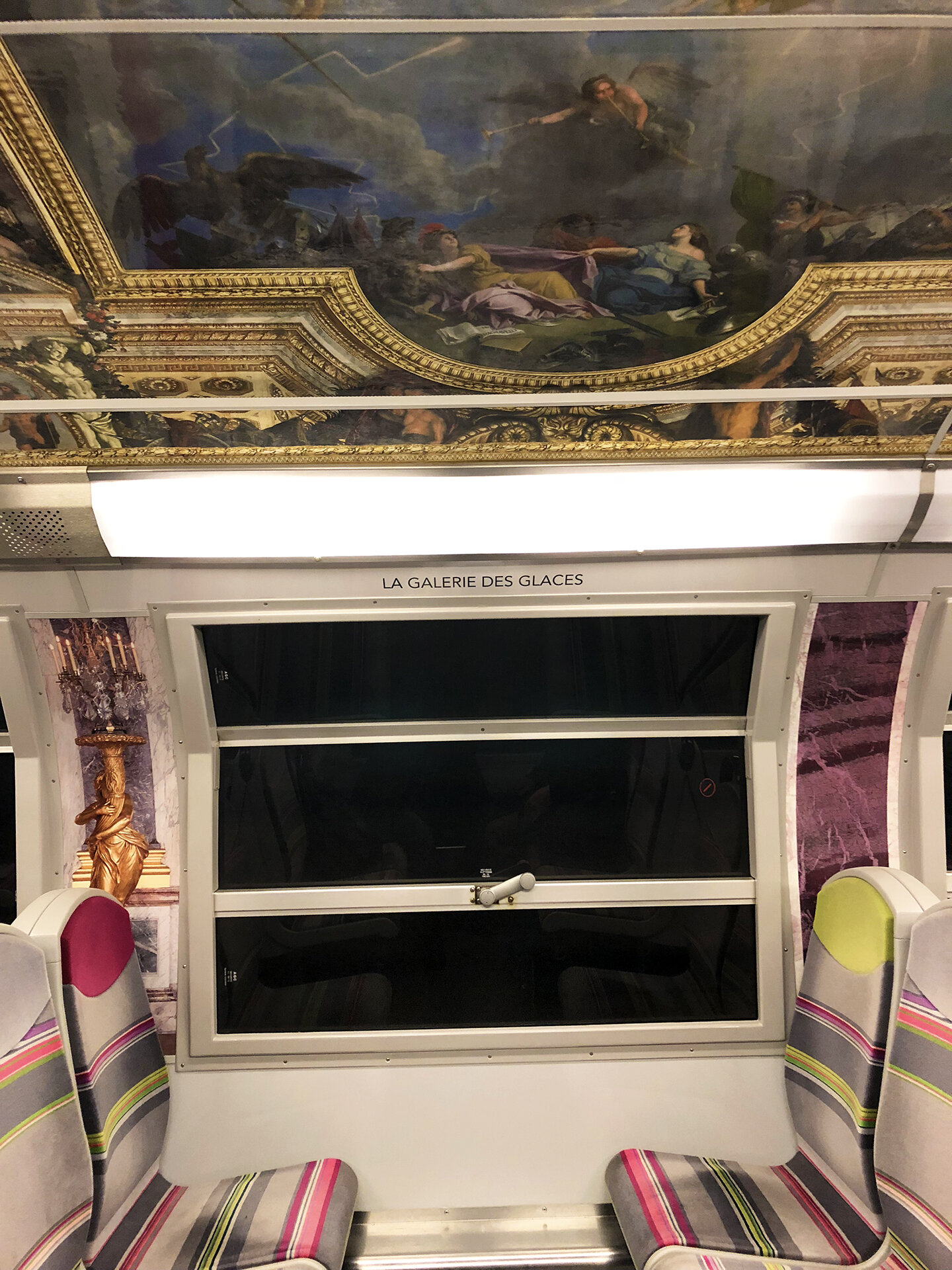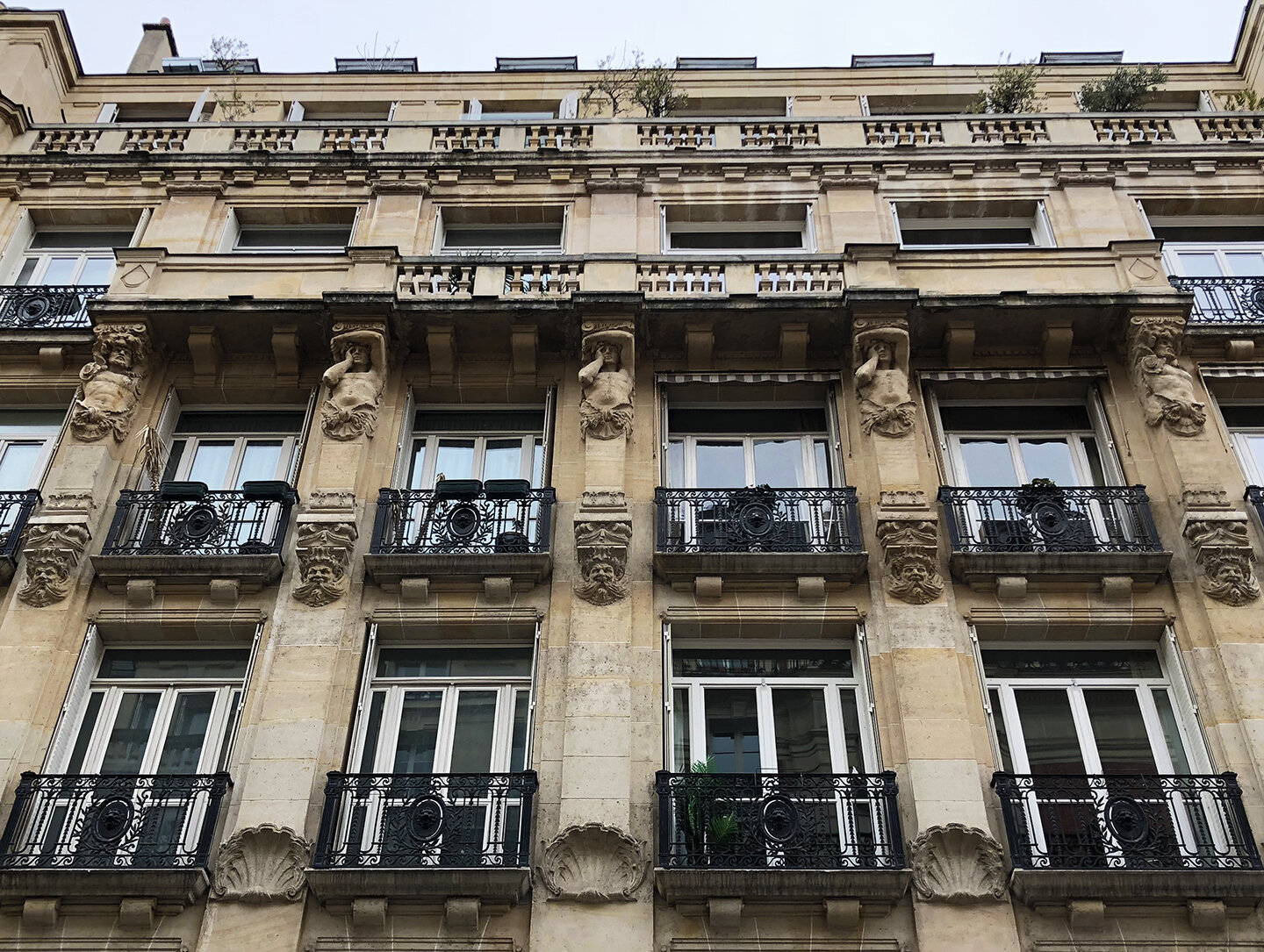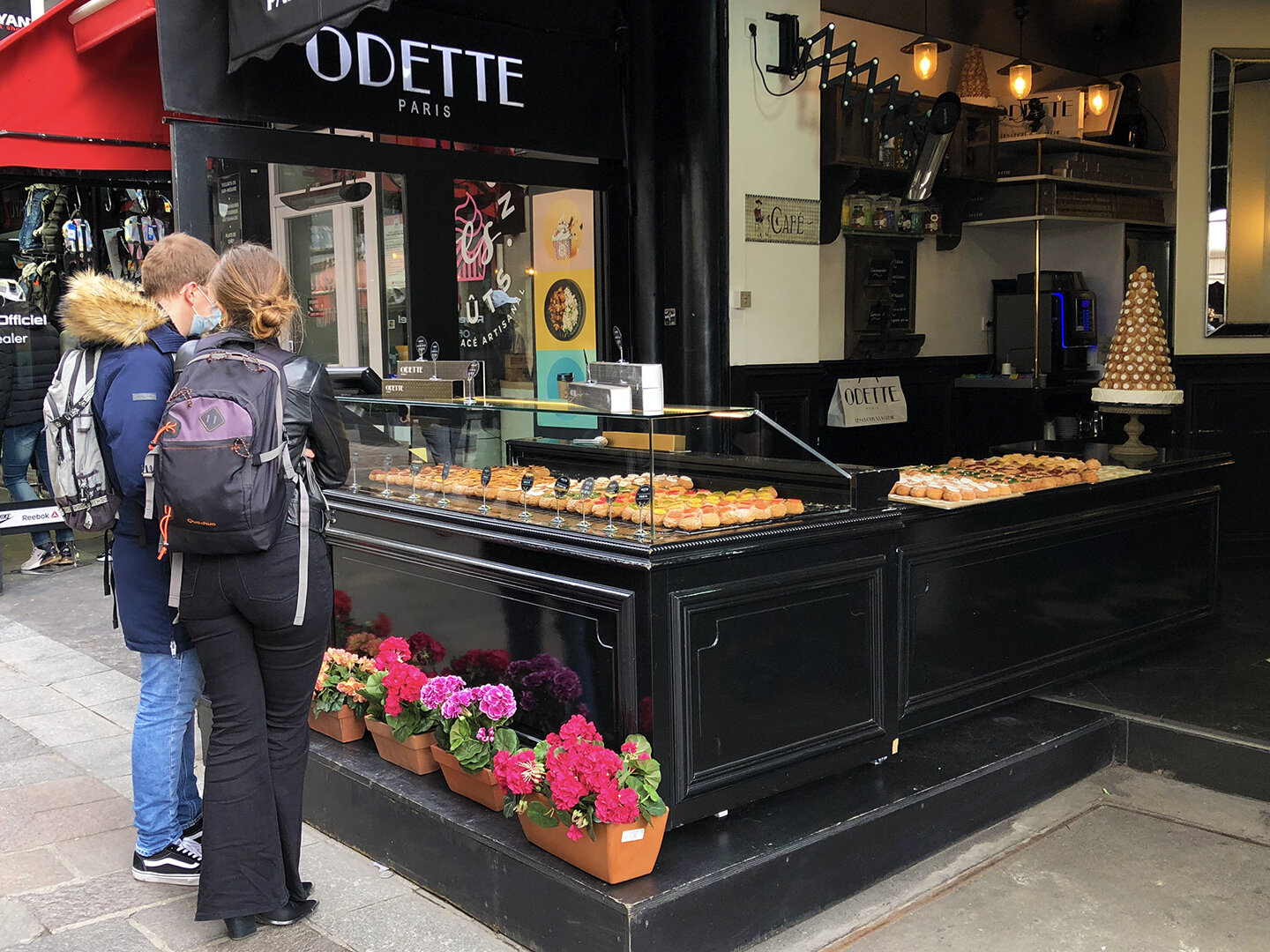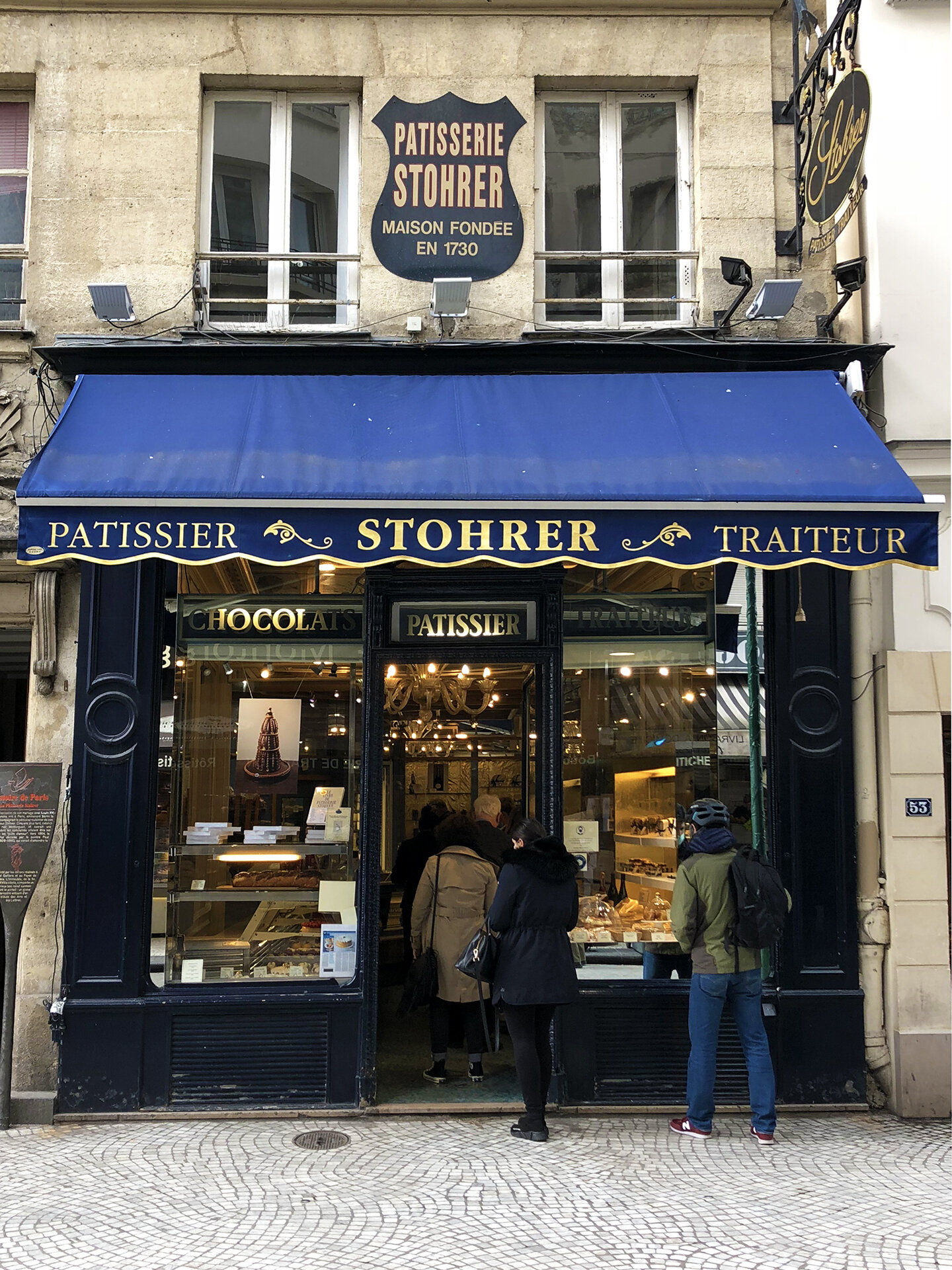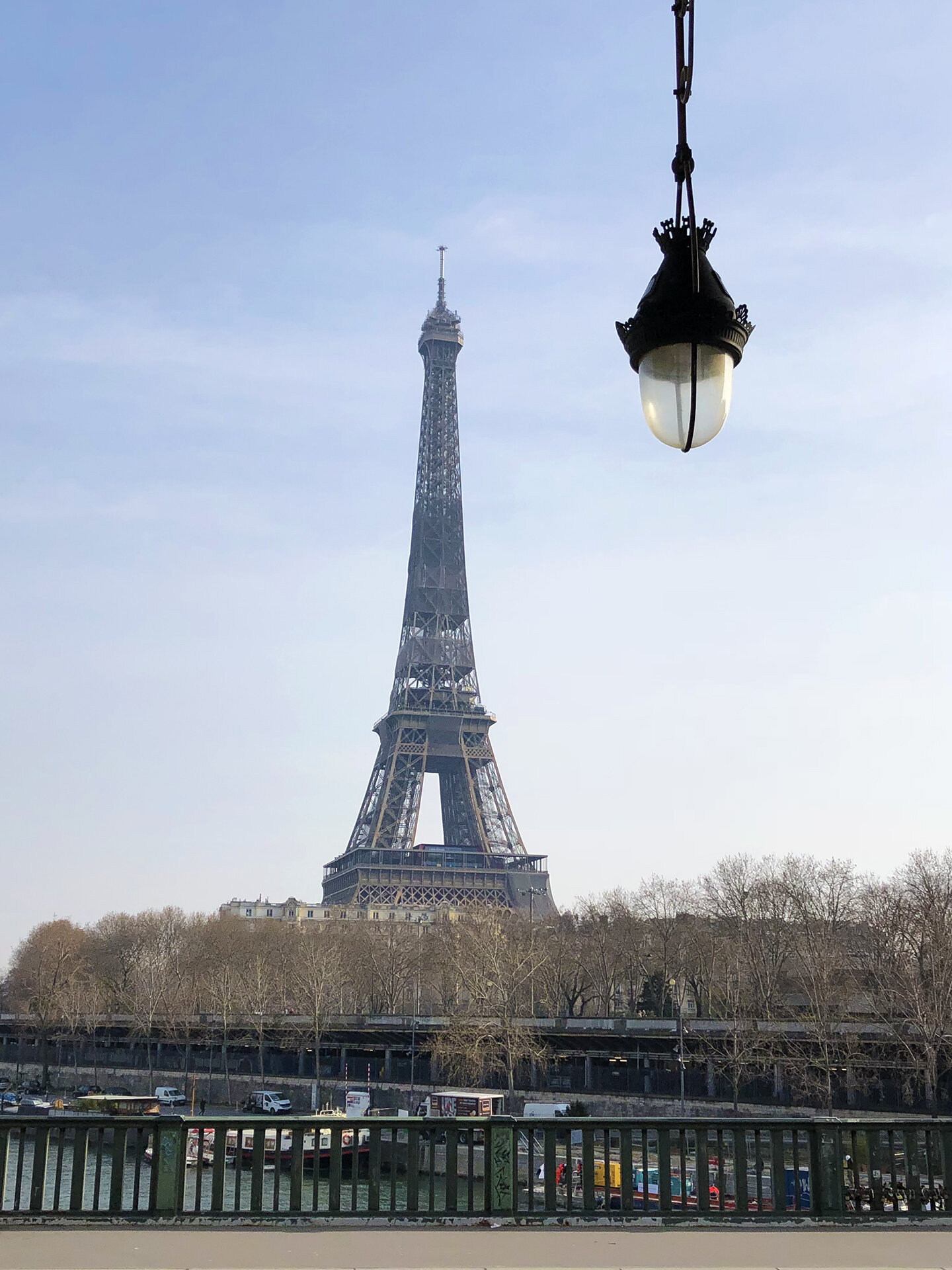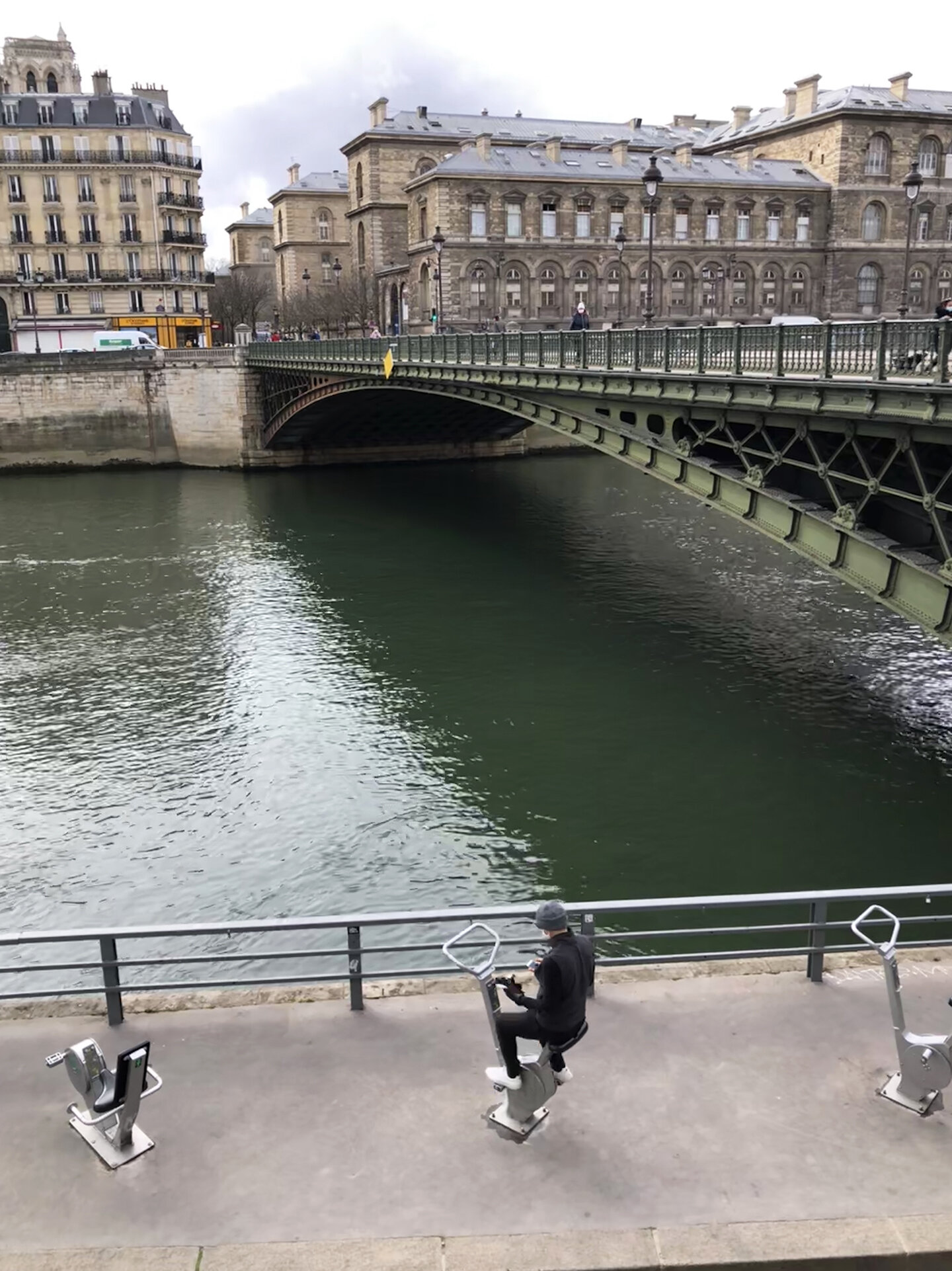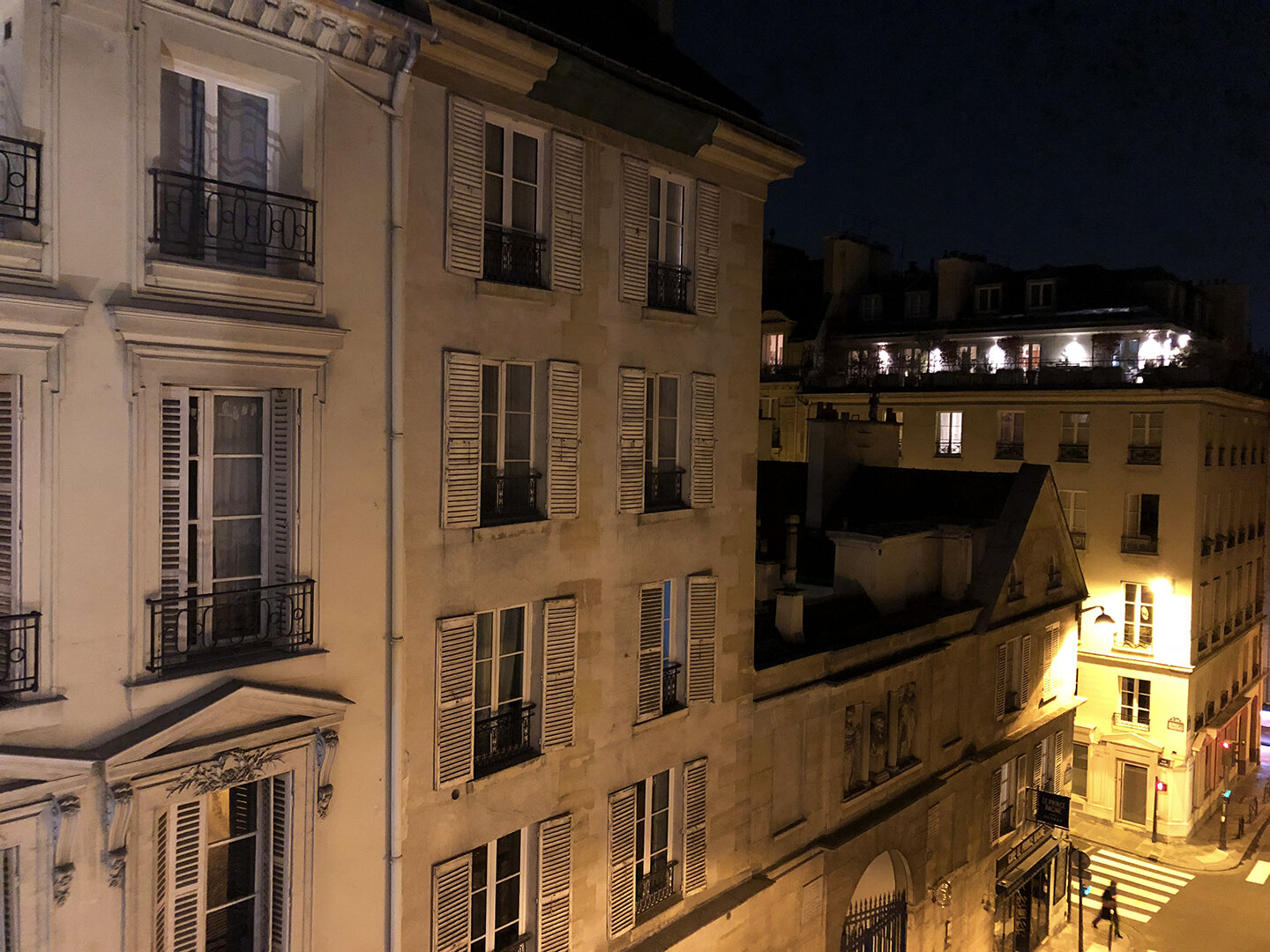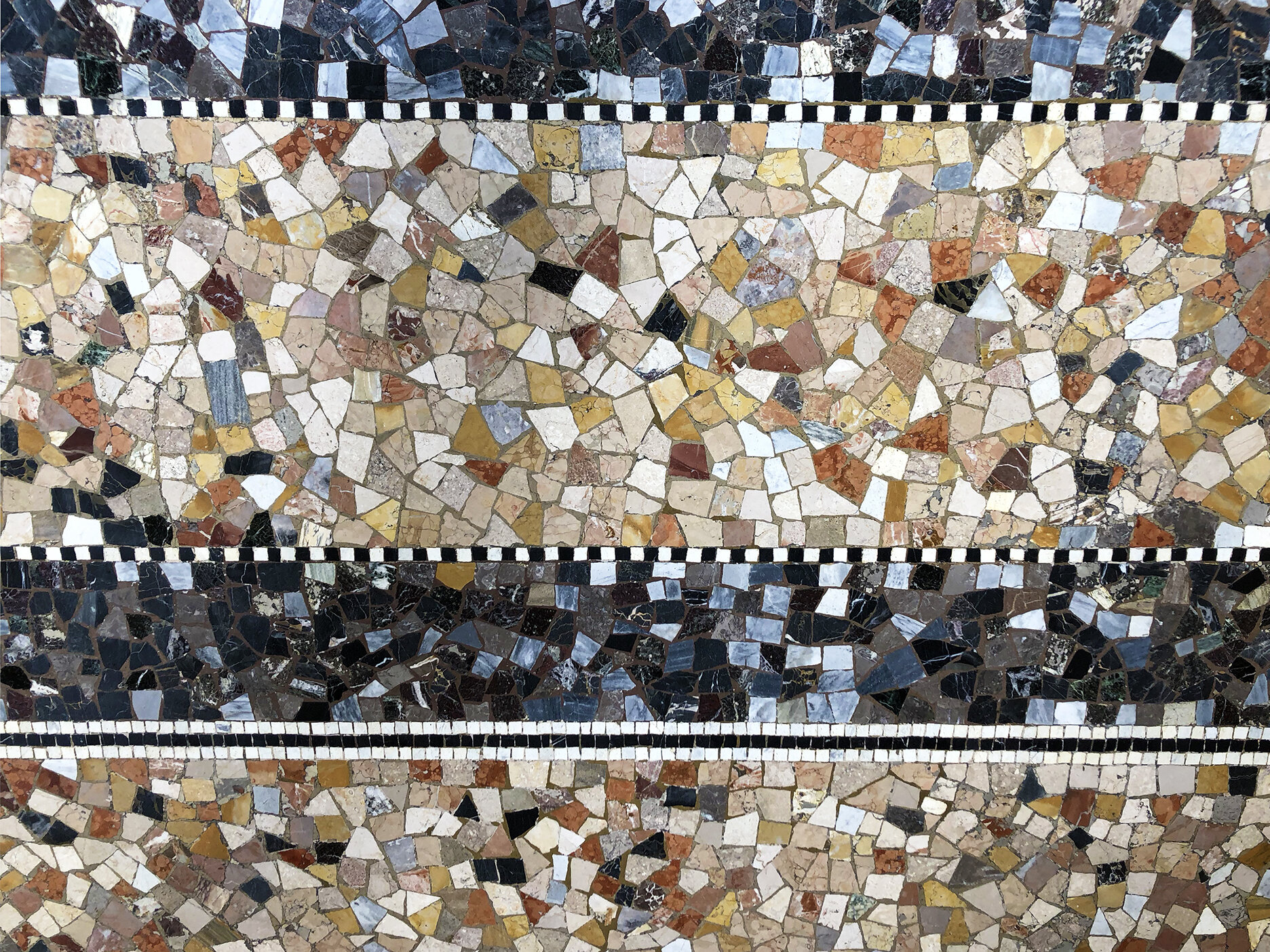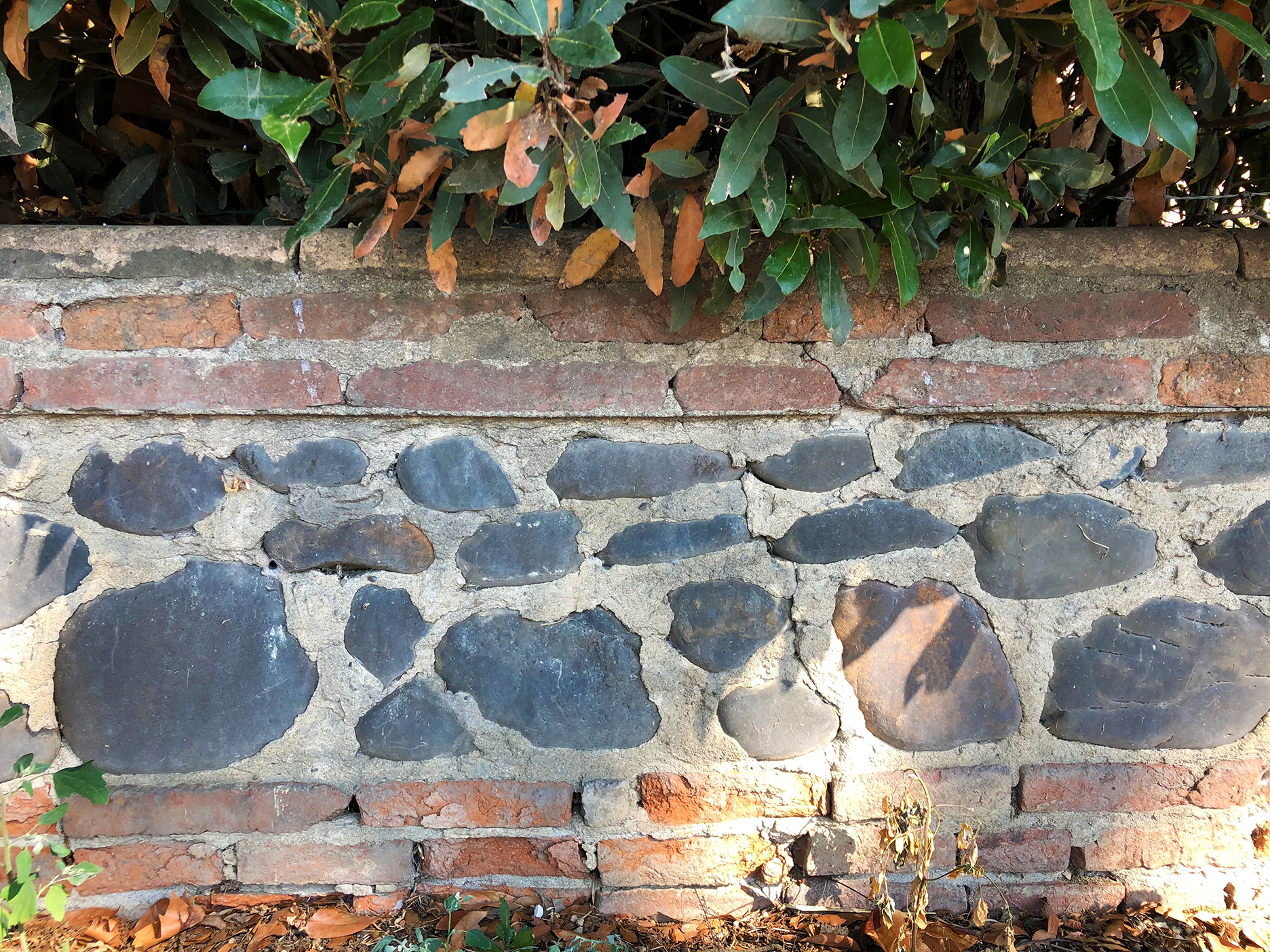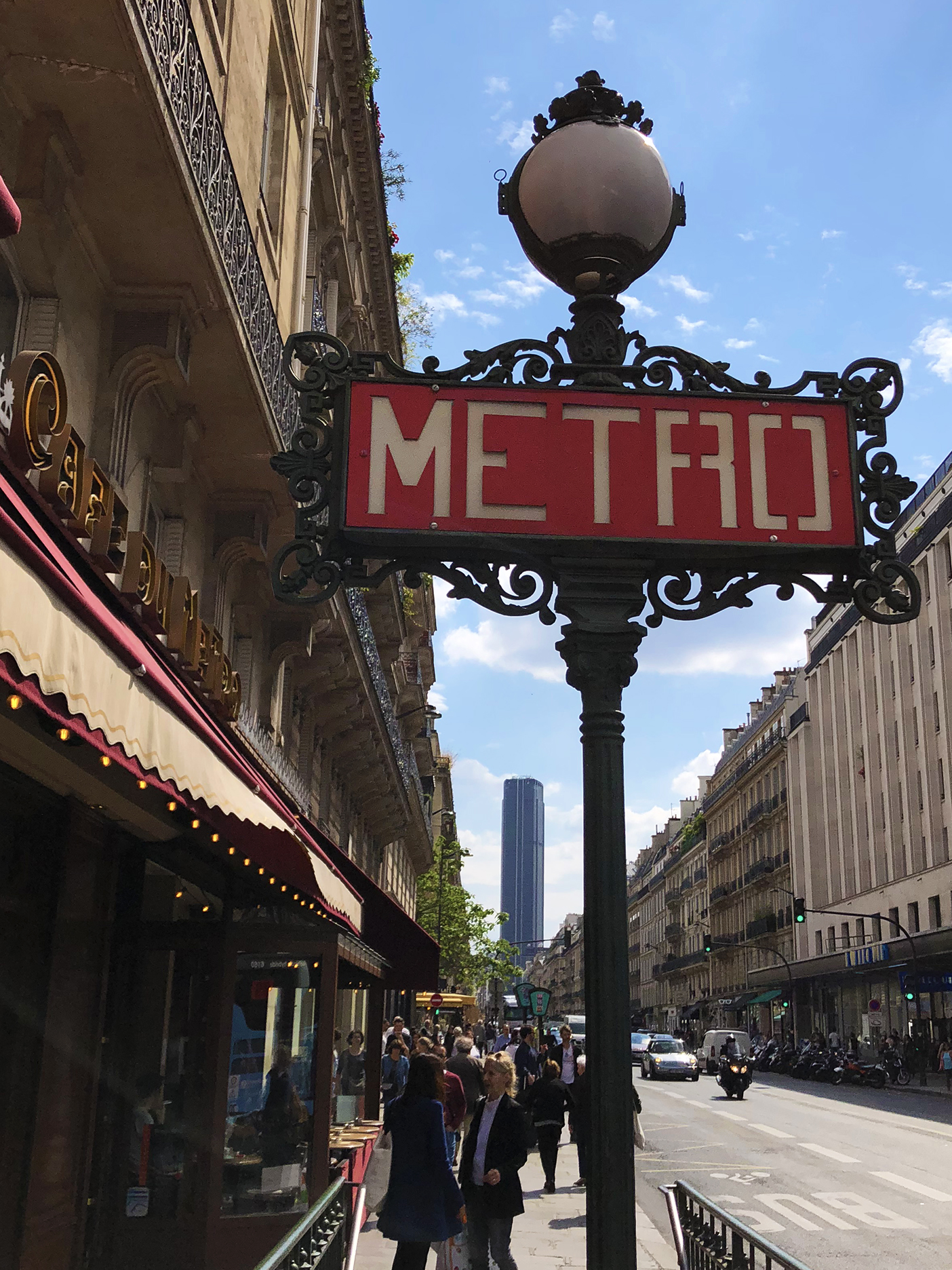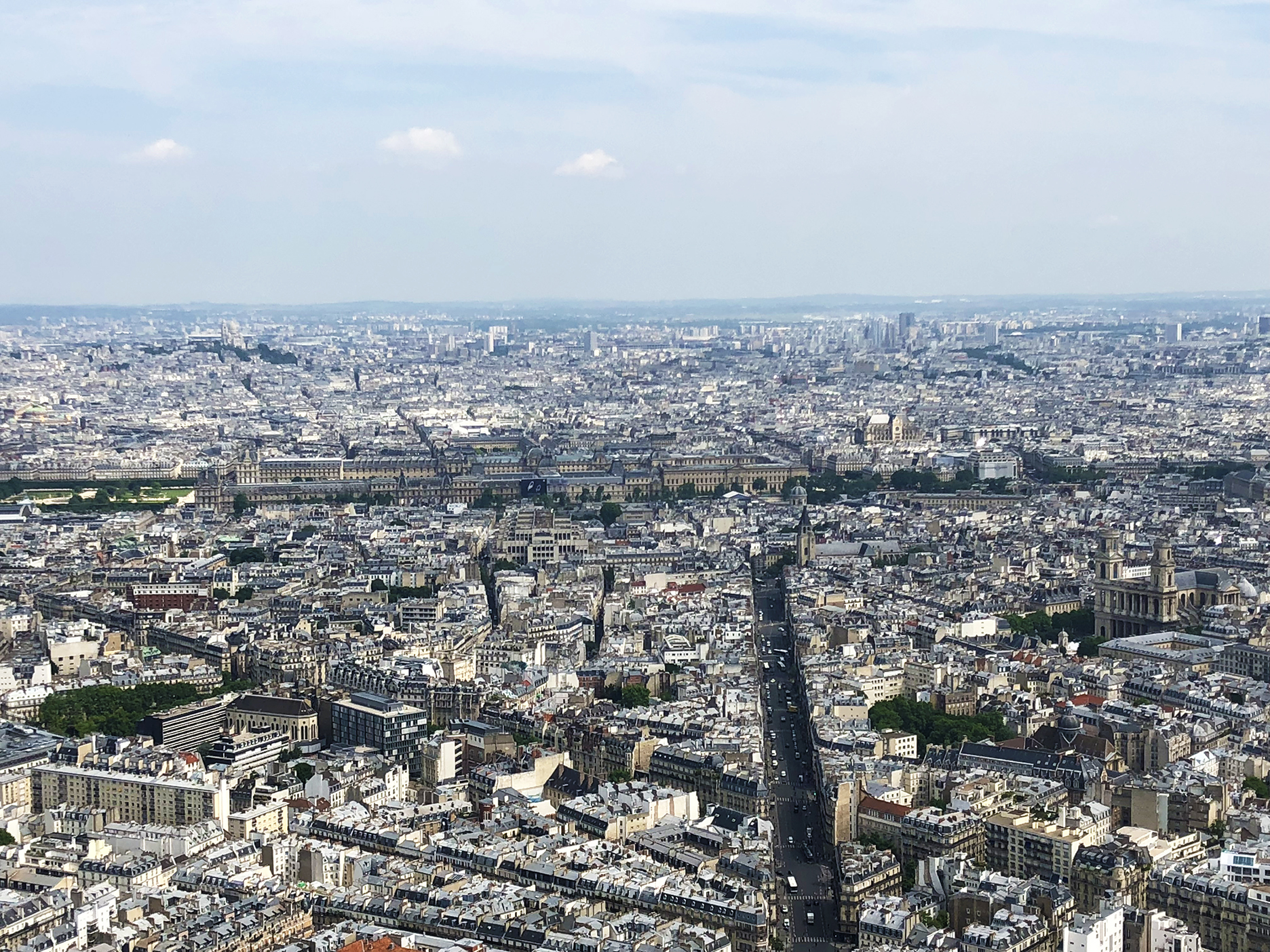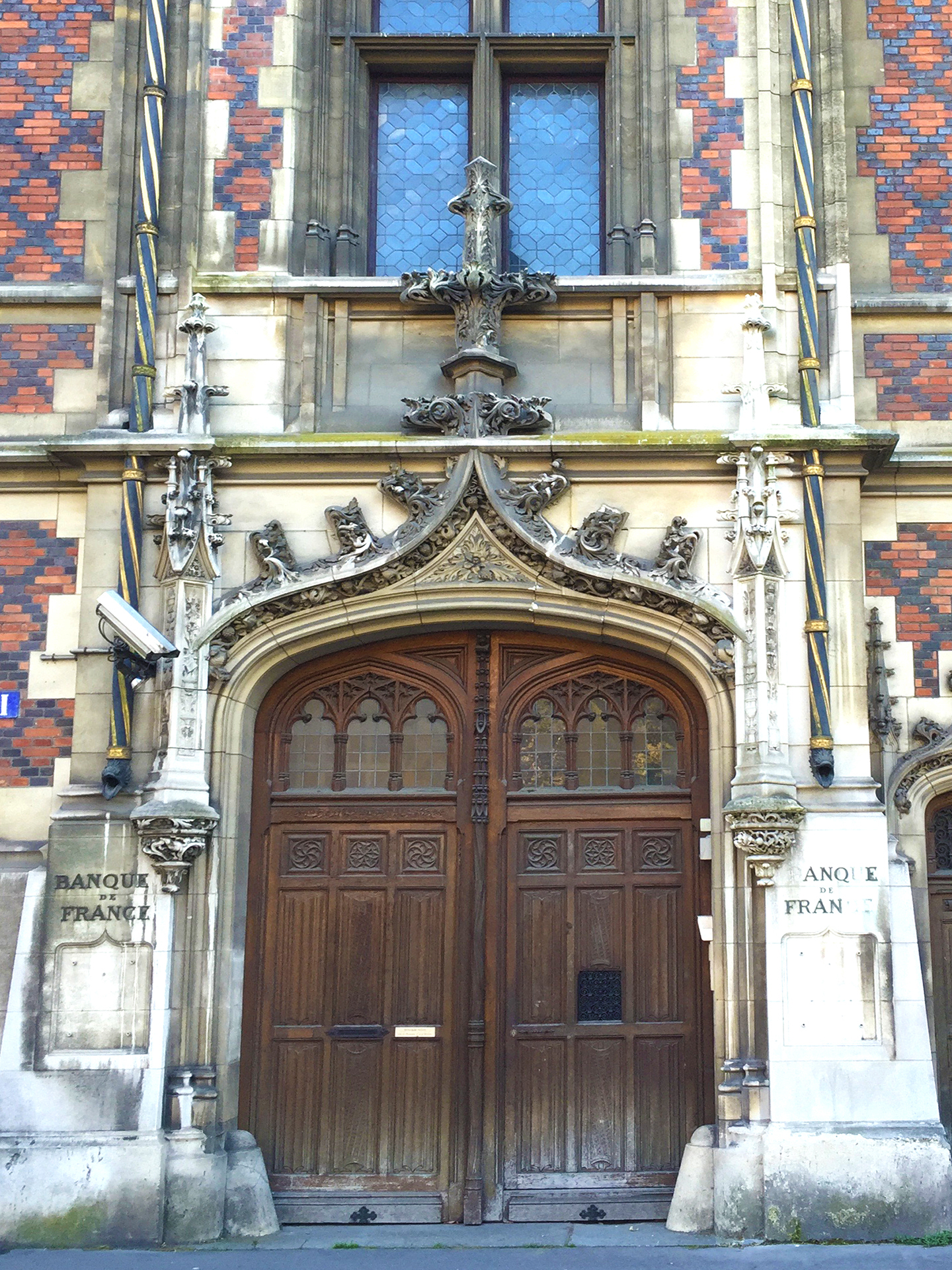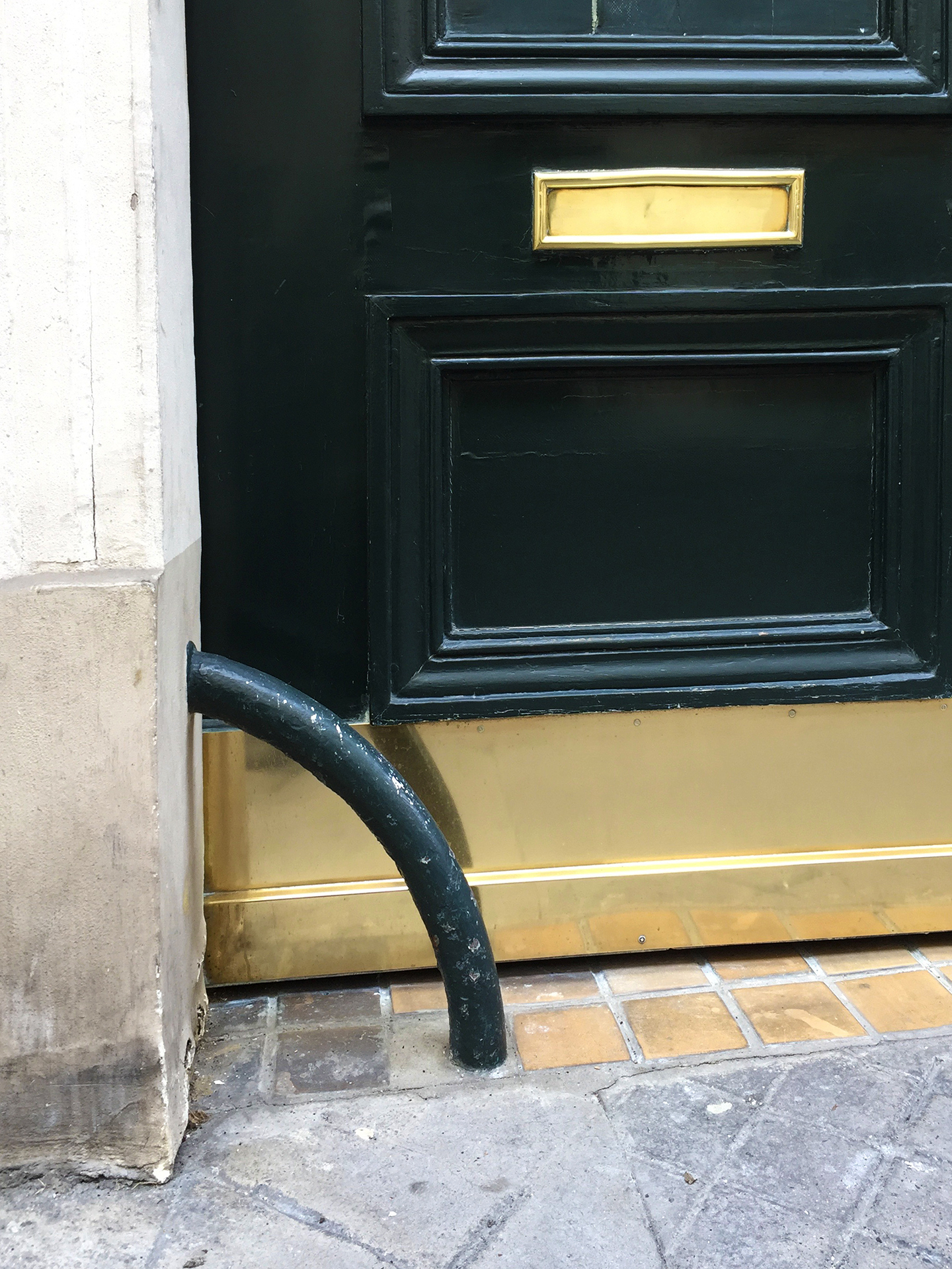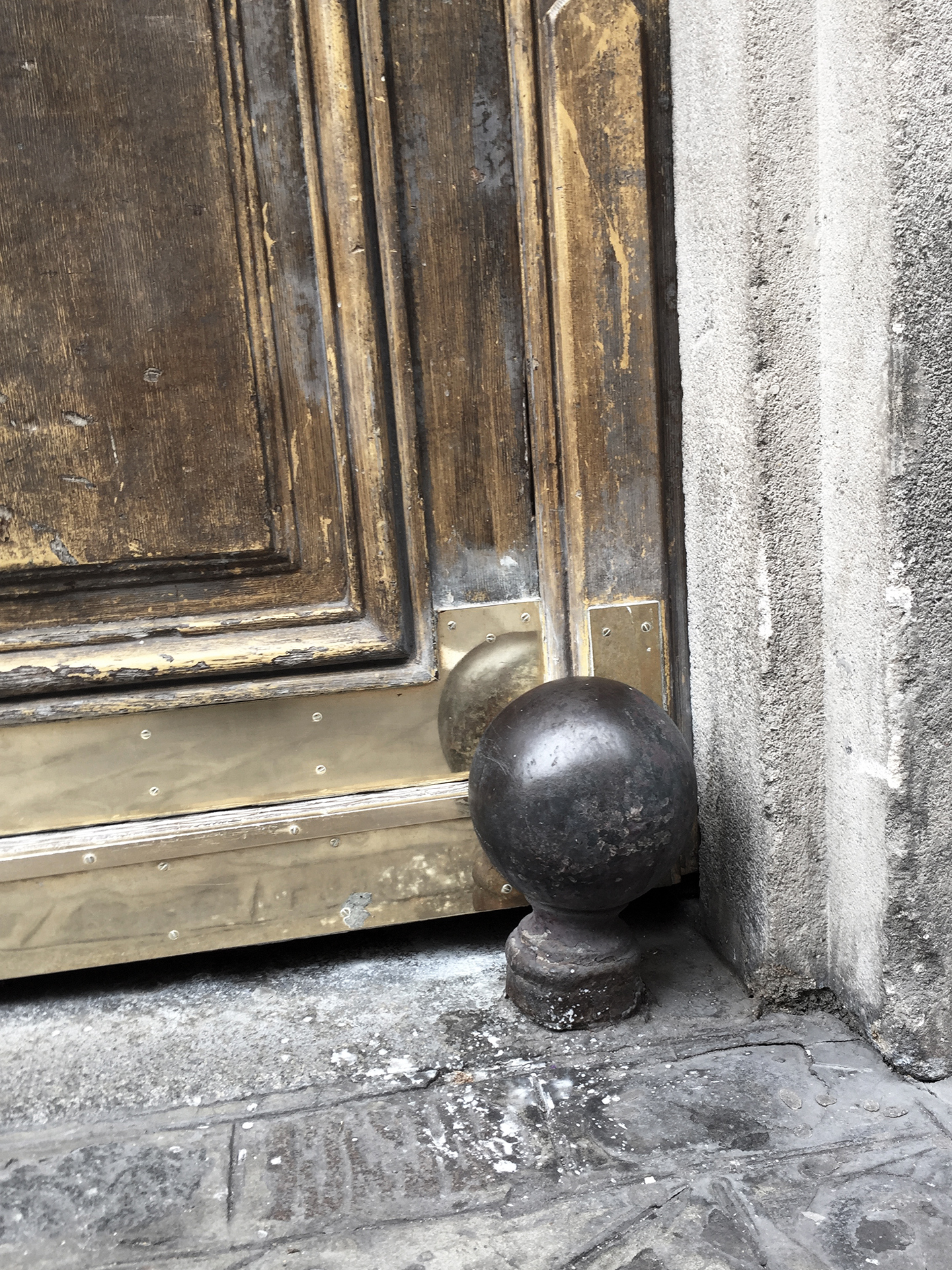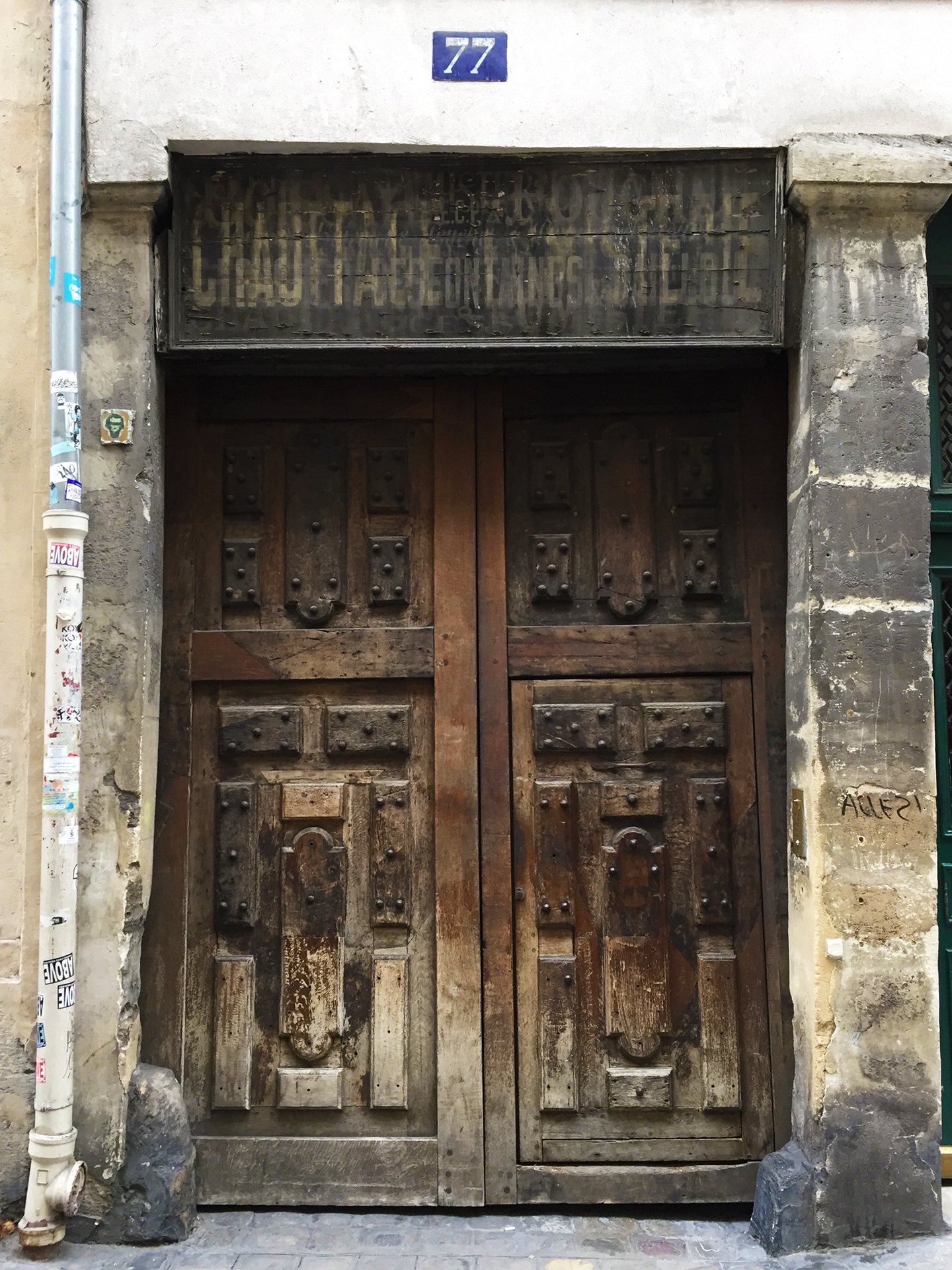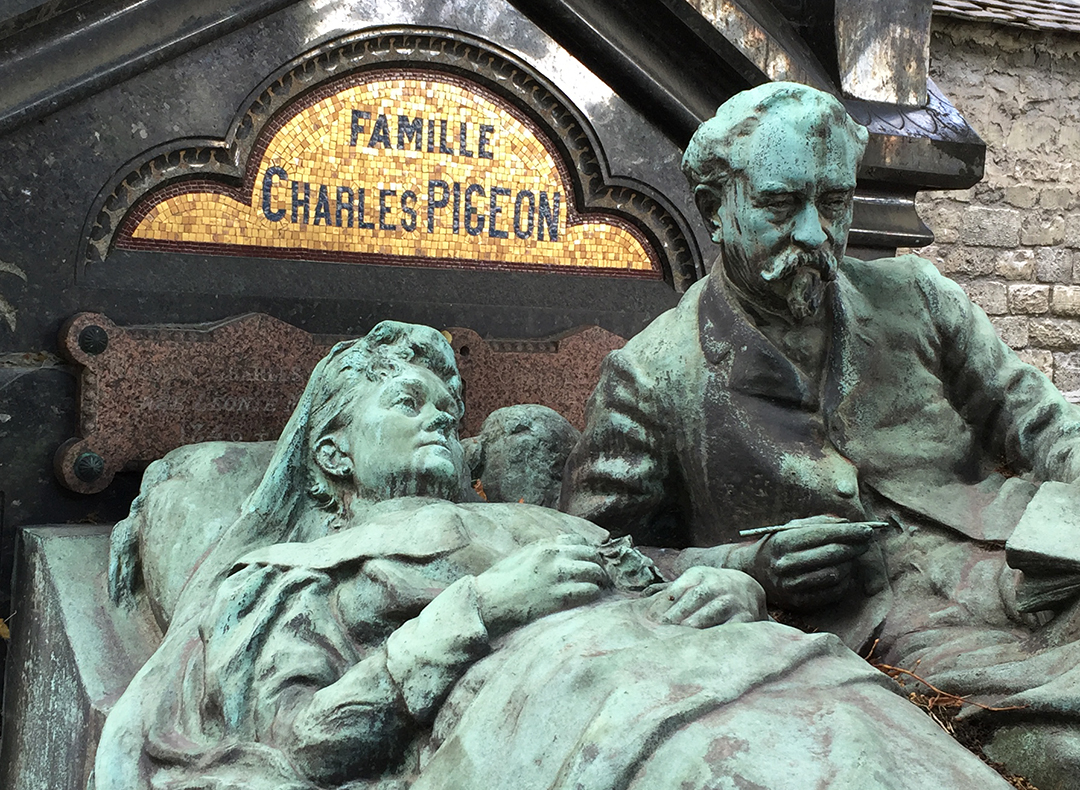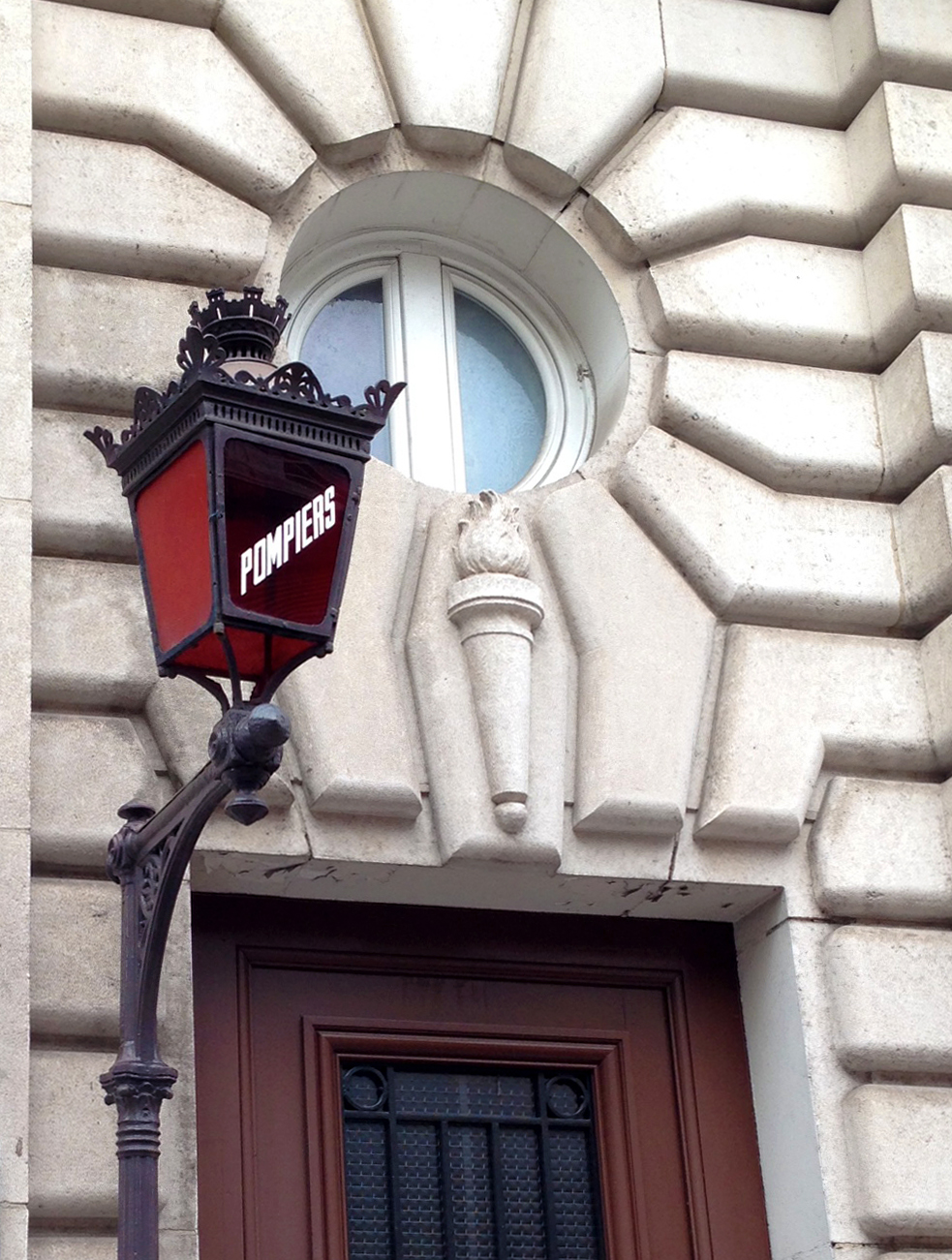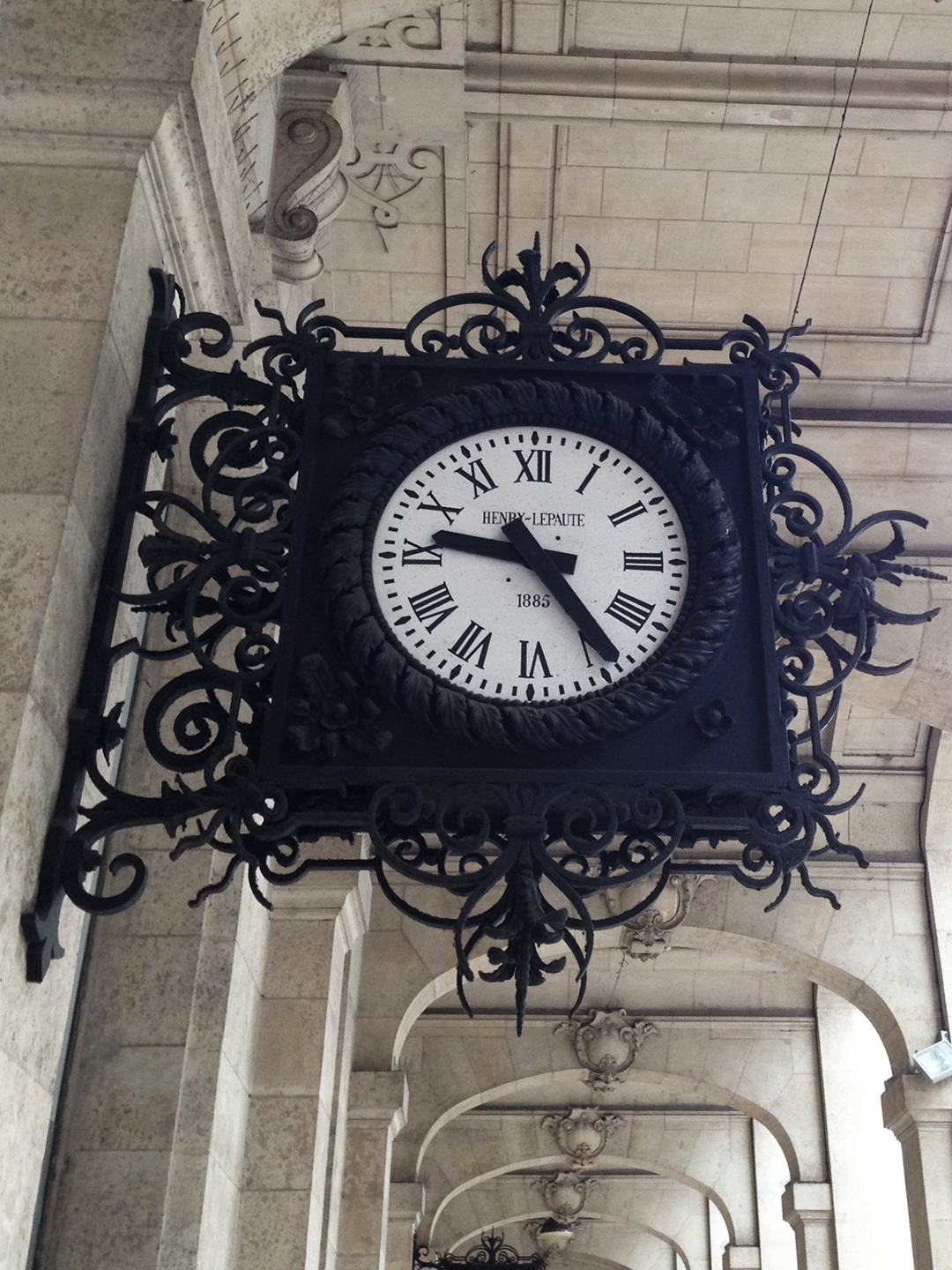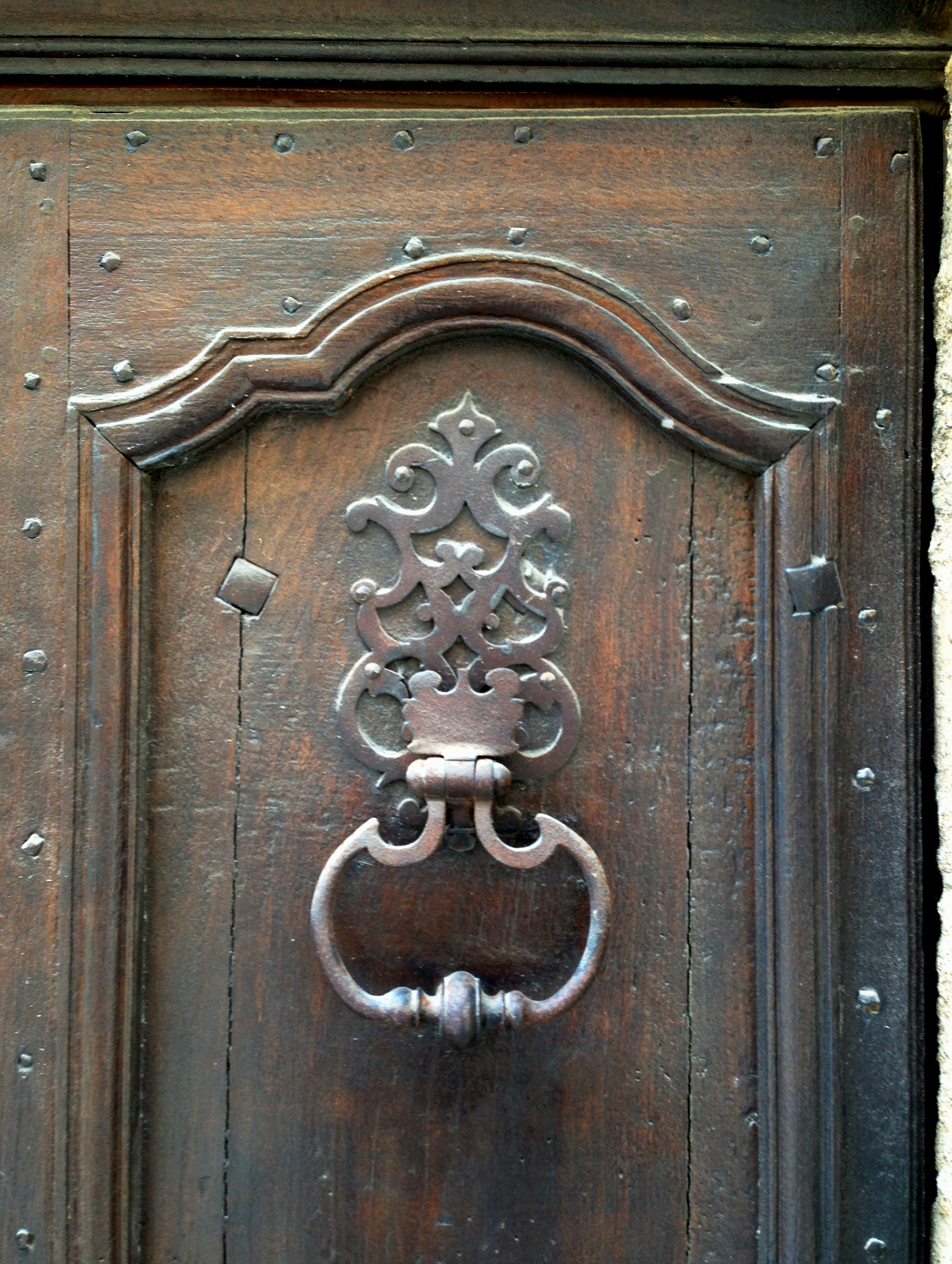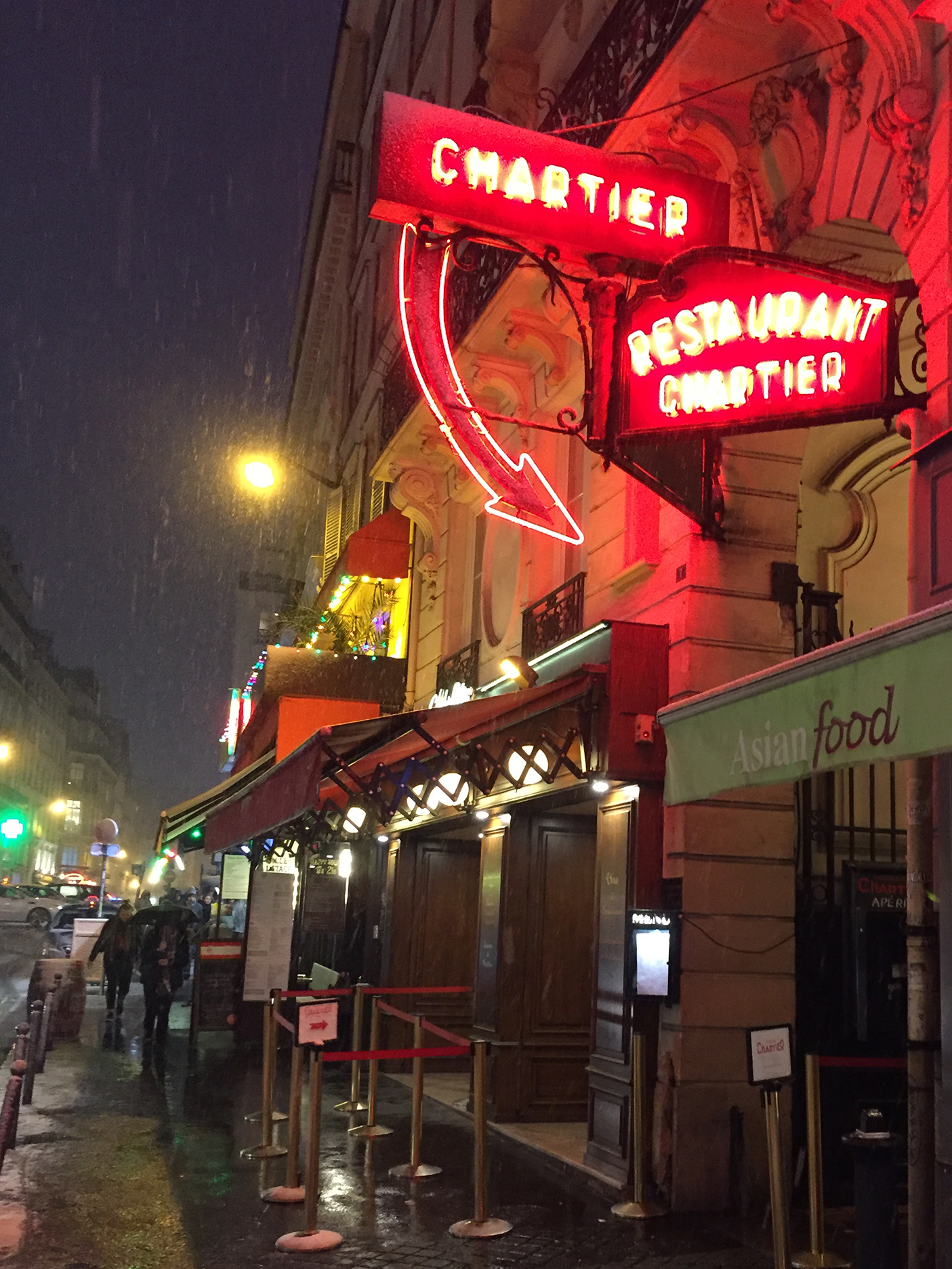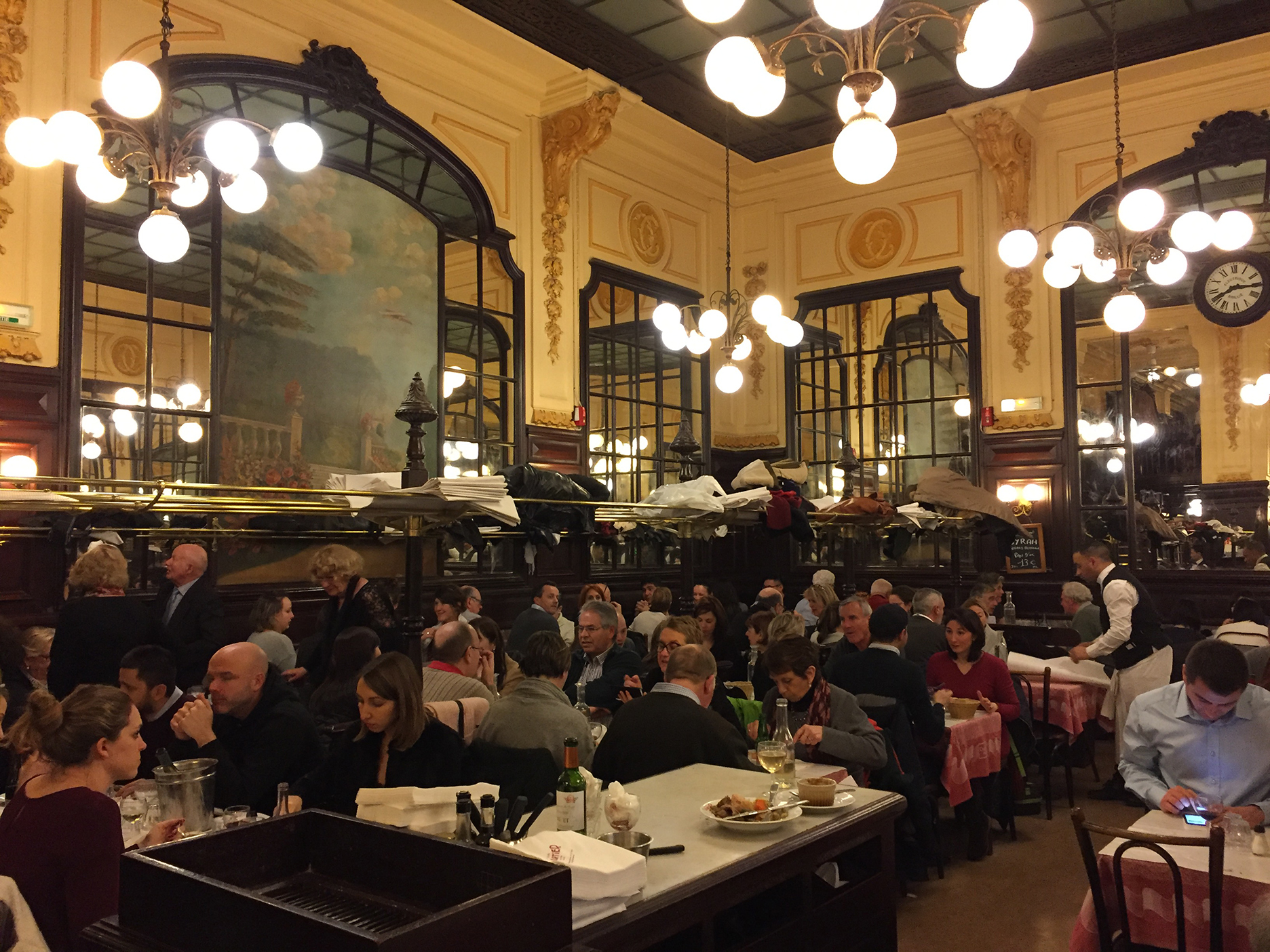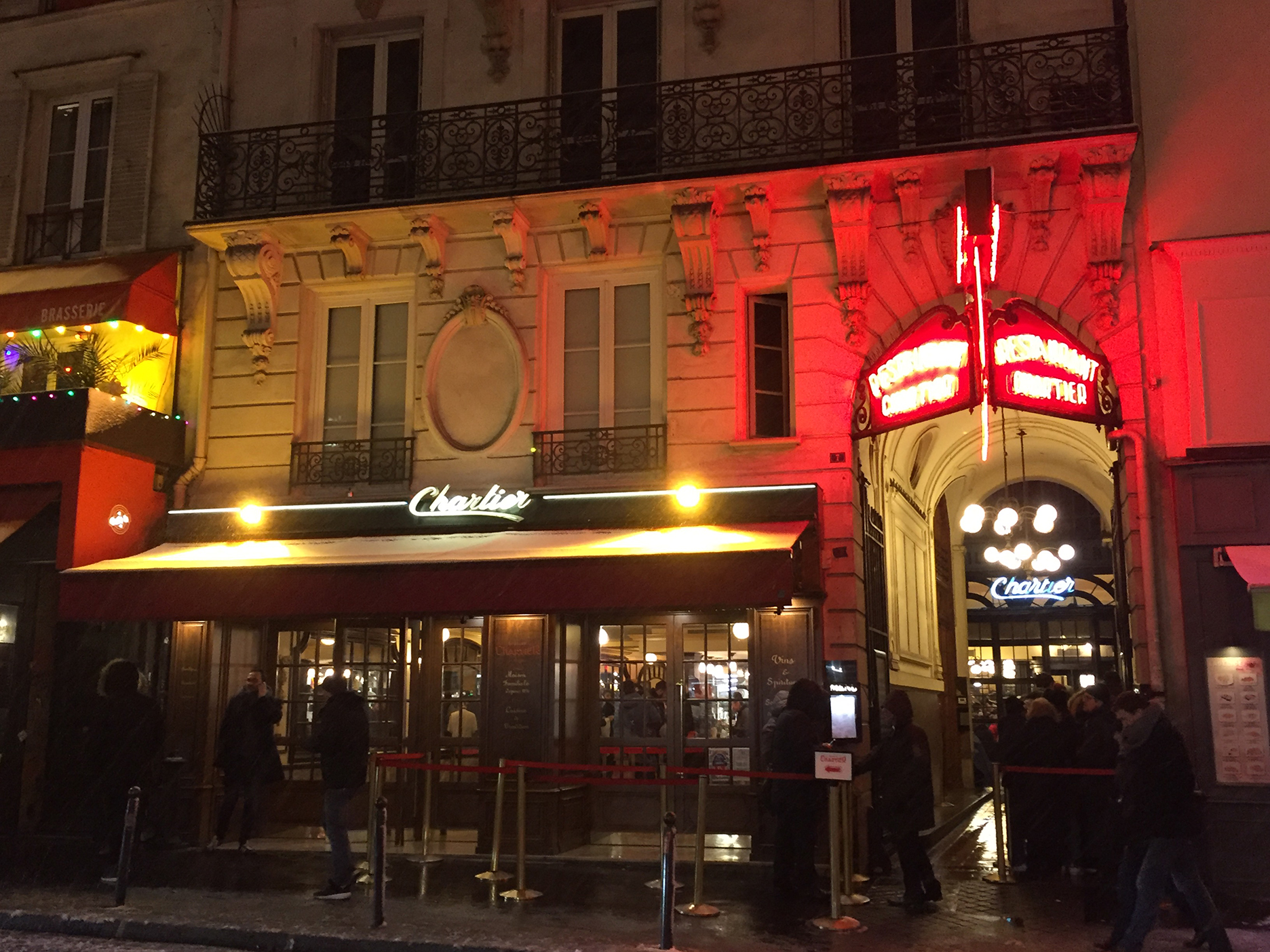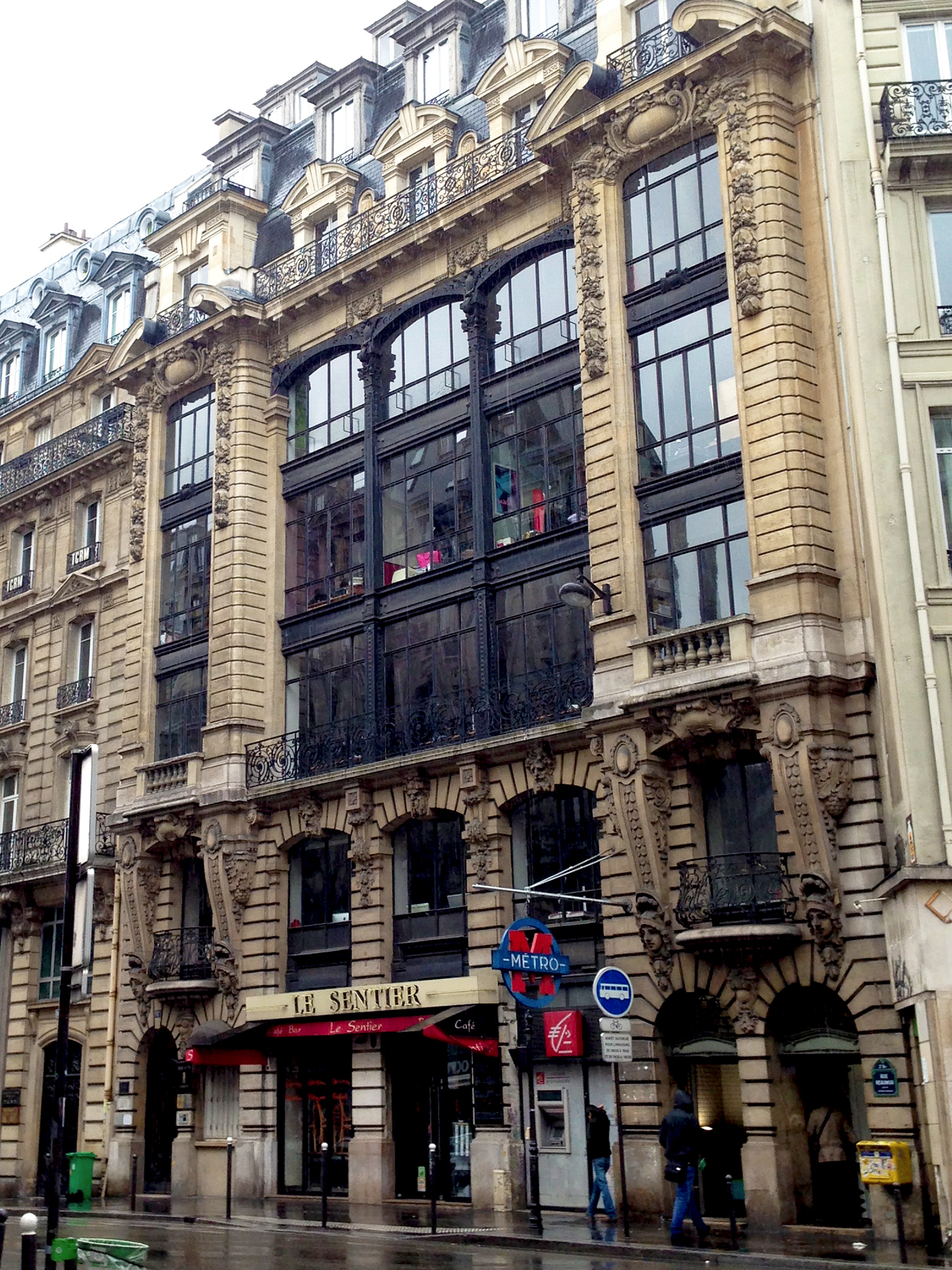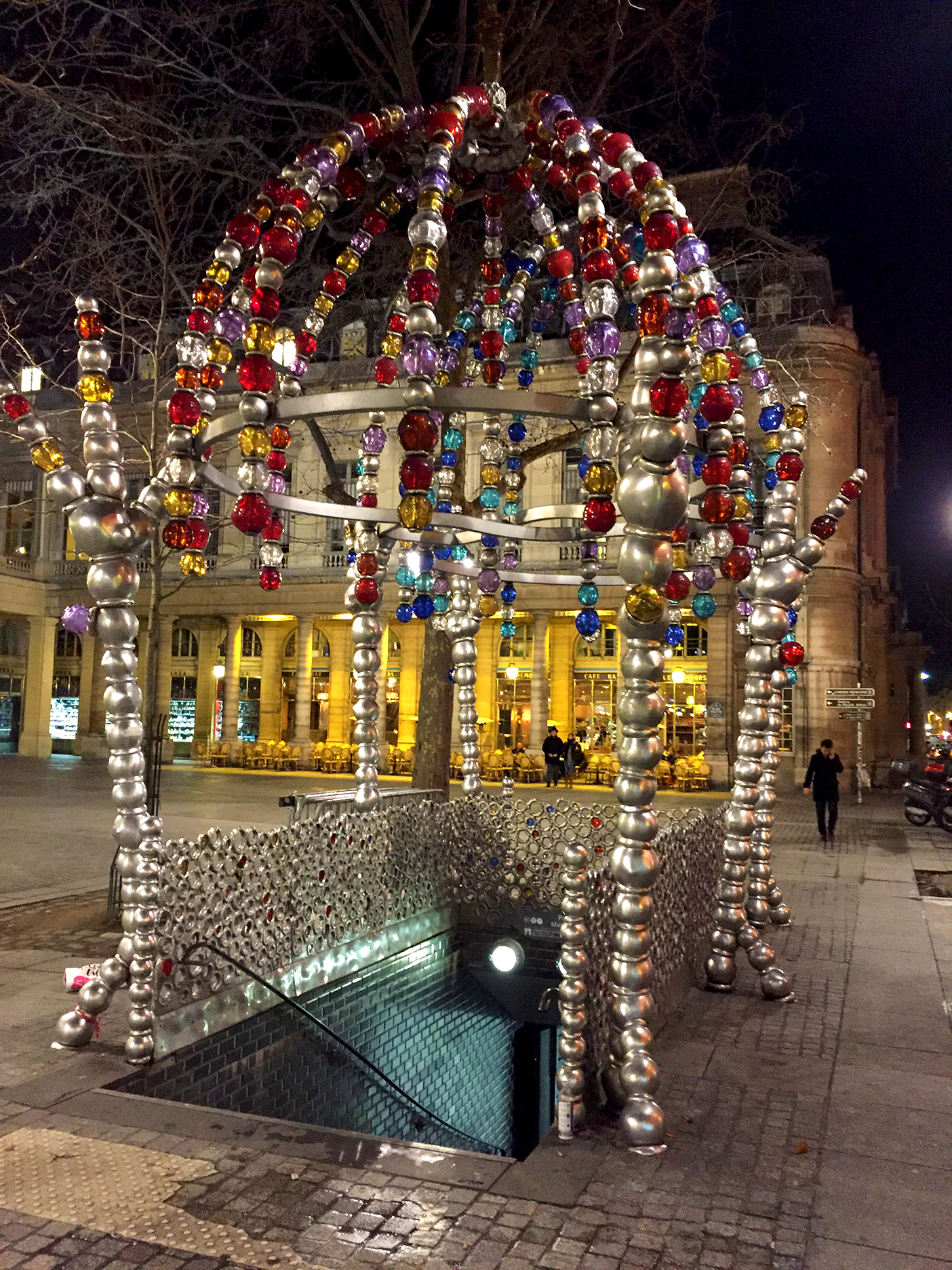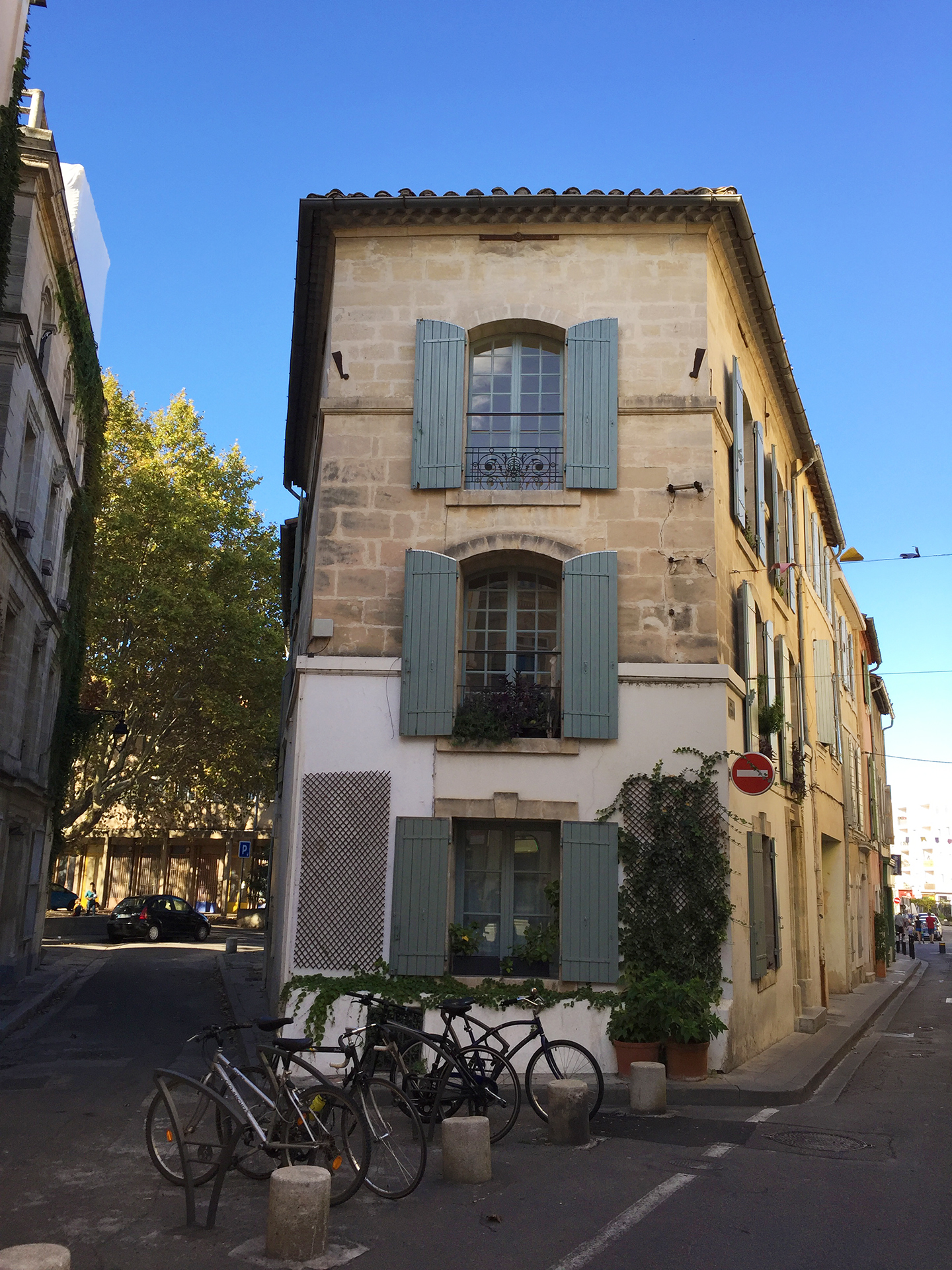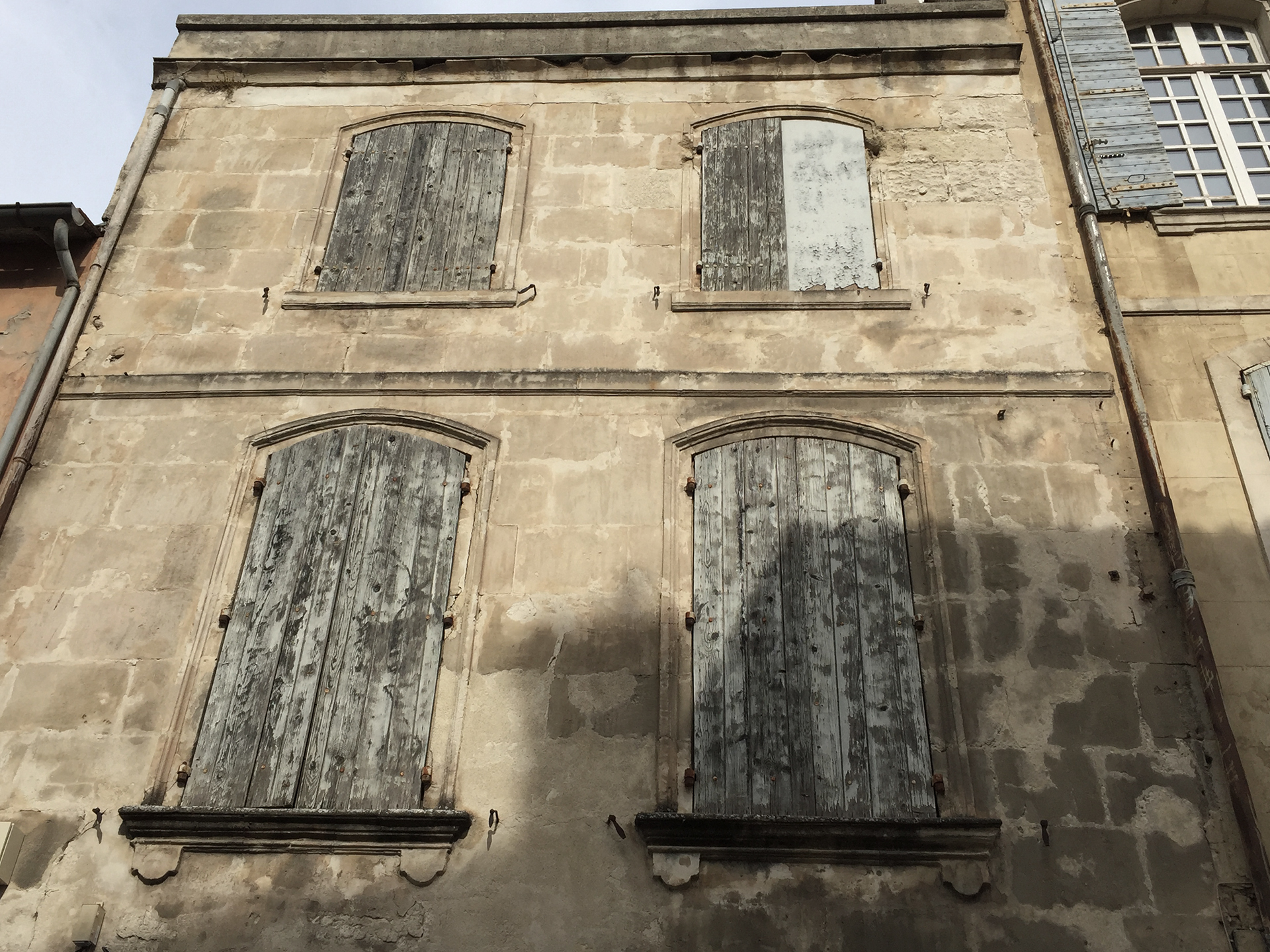This intrepid reporter is following up on her initial post with a fresh batch of observations and photos collected during her recent trip to Paris. The first part of Paris au ralenti probably gave you the impression that Paris had dramatically changed since the pandemic, and not in a good way: an ebullient, festive city turned into a mournful, quiet one. That’s only partially true. I won’t deny there were a few poignant moments where it was hard to shake the feeling of loneliness but they were vastly outnumbered by the numerous “proofs of life” shown by my fellow Parisians and by the stunning examples of everlasting beauty the city is famous for. To make it even better, I consistently found Parisians to be warm, chatty, and helpful! Follow along and you’ll see that, in spite of it all, Paris is always a good idea.
Versailles might be closed but, if you board the right RER C, a métro ticket is all it takes to be transported inside the Hall of Mirrors.
On our first day out, I decided to hang out in the 16th arrondissement. Why, oh why, would I do such a thing? Two reasons. Except for the Trocadéro-Guimet-Palais de Tokyo triangle and Musée Marmottan, that part of the city is shunned by visitors. I figured this affluent and mostly residential area would look reasonably “normal” and I could observe some Parisians in their natural habitat… Also, I was interested in walking in Hector Guimard’s footsteps but I’ll save that for another post.
Five muscular atlantes are needed to support a stone balcony on rue Jasmin
As expected, the streets in the 16th were very clean and the elegant apartment buildings were well-kept. Except for a few Space Invaders gone astray, we didn’t see any street art but filled our eyes with beautiful architectural elements of diverse styles.
Ceramic decor by Gentil & Bourdet on rue Boileau (1906)
Although cafés and restaurants were closed everywhere in Paris, this neighborhood felt lively in its own usual way (yes, it is more sedate than Barbès or Belleville.) Nannies were watching over boisterous children playing in the parks. Impeccably dressed older women were shopping for groceries at Monoprix or dropping off their dry cleaning at the pressing. A large contingent of masked middle-schoolers exited lycée Jean-Baptiste Say, jumped on their scooters, and headed home for lunch. None of them played ball against the wall of the Eglise d’Auteuil, a testimony to their superior reading skills and good manners.
Défense de jouer à la balle contre le mur. Not as common as Défense d’afficher.
Life goes on in other parts of Paris, too. Would you believe that people still buy pastries?
You can still satisfy your chou craving at Odette
Always a line at Kitsuné at Palais Royal
Early afternoon, rue Montorgeuil was not encumbered by tourists snapping photos of Le Rocher de Cancale: it was busy with locals shopping for meat, fish, and produce or picking up dessert for their evening meal. I suspect that all the other streets devoted to food shopping (rues Cler, Cadet, de Lévis, etc.) are equally patronized.
Picking up a baba au rhum, perhaps? It’s Stohrer’s specialty.
A few observations regarding the food scene. Many restaurants have switched to the vente à emporter or livraison models to stay in business. What struck me was the variety and quality of the food we could choose from. MacDo and Domino have their fans but ethnic and traditional French restaurants are offering a fantastic selection of to-go dishes that echoes what they would serve in their dining rooms. We got a delivery from La Ferrandaise: the menu included pork cheeks with blond lentils, low-temperature cooked veal breast with carrots, organic chicken with morels, and more delicious creations. You may have to forgo the restaurant atmosphere but you will get interesting food! I also really like that many restaurants still want to showcase their dining room as an inviting place either by populating the seats with stuffed animals (like Les Deux Magots in my previous post) or by setting up their tables just as if they could welcome you tout de suite. A nice change from the stacked Gatti chairs.
Would you care for some Champagne before your meal? At Le Pré aux Clercs.
Even when the tables are not set, it’s a delight to gaze at some of the restaurant facades.
So much history at Bouillon Racine, founded by the same Chartier family on rue du Faubourg-Montmartre.
Paris remains a gigantic chantier: construction is ever-present, everywhere you look. The Olympic Games deadline is looming large! In addition to the ongoing reconstruction of Notre-Dame, the Eiffel Tower is getting a new paint job.
Makeover time! La Grande Dame will sport her yellow-brown color again.
Fountain Medici in the Luxembourg gardens was emptied out; the renovation of the statues, basin, and water supply continues through June 2021.
Now we know how deep it is
The new Samaritaine complex is ready for its close-up but the new Louis Vuitton headquarters across the street are wrapped in scaffolding.
The Rivoli façade of la Samaritaine got more than a face lift! The Art Nouveau façade on rue de la Monnaie and original façade on quai du Louvre were nicely restored.
There is a running (pun intended) joke that Parisians “discovered” the virtues of sports as soon as they were told to remain inside their apartments. Gyms are currently closed: parks and gardens are the new locations to watch bodies squeezed into Spandex: fitness, running, Tai Chi… Apparently, boxing has many devotees, especially among women: one particular instructor was spotted at Luxembourg on Thursday and at Palais Royal on Friday. Have gloves, will travel.
Tai Chi in the gardens: low and slow.
Fitness class at Palais Royal. Note to self: head out to Kitsuné after working out….
If climbing is your thing, the underside of pont de Grenelle on Ile des Cygnes has been set up as a climbing wall. You can stare at the Statue of Liberty while pulling yourself up. Or, you could head out to the right bank near Pont d’Arcole and ride a stationary bike while watching the barges float by.
Who wouldn’t pick this view instead of riding a Peloton in their living room?
Of course, Parisians are also spending quality time outdoors with their four-legged companions.
Meet and greet on Ile des Cygnes
Cinemas may be closed but film production has resumed and we noticed crews at several locations. No Emily or Lupin sighting, though.
Stumbled upon the set of Les passagers de la nuit starring Charlotte Gainsbourg. No Charlotte sighting either…
And if you need further evidence that life in Paris is quasi-normal, rest assured: you can still enjoy a good street demonstration, and not just during the weekend.
Théâtre Odéon is occupied by actors and stagehands protesting the shutdown of cultural venues. We saw them every afternoon, playing and singing Bella Ciao.
Whether it’s March or July, a prudent traveler always carries an umbrella and keeps a Plan B in mind in case it rains. Covered passages and galleries are open; they provide lovely sights and one-of-a-kind shopping experiences.
Mosaic floor at galerie Vivienne. You did recognize it, didn’t you?
Churches were open as well. We popped into Saint-Germain-des-Prés right after a funeral; the restoration work is finished and the colors are stunning. That same afternoon, the rain and wind were so violent that we took refuge in Saint-Sulpice. During a funeral. We sat down by one of the side chapels. Saint-Sulpice is huge (the second largest church in Paris after Notre-Dame) and social distancing was in effect, along with masking and hand sanitizer. It felt a bit odd –and oddly comforting– to share this moment and space with a large group of strangers. As Aristotle said: “man is by nature a social animal.”
Come to the light! Stained glass projection at Saint-Germain-des-Prés.
In general, gardens seemed a bit less populated than usual but the weather was not necessarily encouraging people to linger on a chair with a good book. Tulips were not out yet but the tulip trees at Palais Royal had put on their seasonal show in beautiful shades of pink.
Blooms at Palais Royal
Whatever the season, gazing at floral shops is always a treat. Peculiar buildings, whimsical decorative touches, bouquets of flowers in galvanized buckets, potted plants spilling over the sidewalk… every shop tells a little story.
When the shop is as pretty as the flowers. Floranges on rue Michel-Ange.
Inside marché Saint-Germain, a Meilleur Ouvrier de France creates floral arrangements at maison Beaufrère.
Les Fleurs du Mal: what a great prop! Stanislas Draber on rue Racine offers flowers and poetry.
If all you can do is stroll, Paris might be the most exciting place to do it. Where else can you walk all day long and be treated to beautiful architectural details right and left?
130 rue Réaumur. It’s the main street in the old Sentier neighborhood, the former home of printing presses and sewing machines. Most of the imposing buildings have especially high ceilings on the lower floors where industrial equipment was set up.
Fantastic doors and caryatides abound in Paris. These two ladies on rue Monsieur le Prince are called La Studieuse and La Libertine. Which is which?
I often catch great reflections of the Palais Royal gardens in the shop windows under the Montpensier arcades.
In the mood for poetry? Rimbaud’s Le Bateau Ivre unfolds on a wall at rue Férou.
One of my (not so) guilty pleasures is to wait for a large porte cochère to open up, sneak inside, in hope of discovering a secret courtyard.
Score!
Sometimes, it’s “just” a worn-out staircase, a heavy wood beam, and an ornate handrail.
I think one of my next photography projects should be to search for lovely ceramic and mosaic details on Parisian buildings. That will keep me occupied for a while!
Mosaic at Relais Odéon
And, of course, there is also street art and art-in-the-street: even familiar places can be “new to you” on repeat visits.
There is always a photo expo hanging on the fences of the Luxembourg garden. If you can’t come to art, art will come to you.
Be masked and merry!
Each evening, the curfew required us to be back at the lovely hotel Saint-Paul Rive Gauche by 6 pm. We were not allowed to eat out but, one night, a talented saxophonist serenaded us with jazz tunes around 7:30 pm. I watched him pace the street and play until he disappeared from my sight. I took in the grey zinc and slate rooftops, the carved window pediments, and the forged iron balconies. I caught a fleeting glimpse of someone heading home, bathed in the warm glow of a street lamp. I drew the curtains closed. It had been a good day and Paris was still a good idea.
A room with a view
Vocabulary
Le pressing: dry cleaners
Le chou à la crème: cream puff
Le baba au rhum: a sponge cake soaked in rum, with whipped cream
La vente à emporter: take-out
La livraison: delivery
Tout de suite: immediately
Le chantier: construction site
La porte cochère: carriage entrance
My book is perfect to help you plan your next trip to Paris. Or to reminisce when you can’t cross the pond… Buy a copy of Moments Parfaits in Paris: I'll mail you (from France) a signed bookmark in an envelope bearing this collectible Trésors de Notre-Dame stamp!

